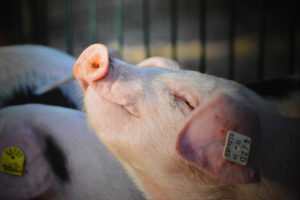Observers consider the outbreak of African Swine Fever (ASF) in Batangas province the start of the second wave of the dreaded pig disease. The first was in 2019, and that dethroned Bulacan as the largest supplier of pork to the National Capital Region (NCR). That initially affected Luzon, but in the next two years, the whole country had its share of ASF. Batangas survived partly because a greater part of its industry was commercial, and biosecurity measures were relatively protected from ASF.
In this wave, ground zero is the province of Batangas, the largest supplier of pork to the NCR. Because of its port in Batangas City, the province is also an entry point of the pigs from Visayas and Mindanao into the NCR. As of this writing, I picked up from among the text messages I received on the topic, that 70% of the provincial pig industry has been killed by the virus or culled to arrest the spread of the disease.
In my view, if the industry and government do not do something smarter than what they are doing now to contain the virus, in the next few months we may observe the end of our once vibrant pig industry, and erase about a percentage point growth of the country’s agriculture gross domestic product. It will puncture the government’s fight against food price inflation. Pork is a major supplier of protein of the population, and we expect pork prices to be inflated without the local pig industry.
INEFFECTIVE SURVEILLANCEThe World Organisation for Animal Health (WOAH) has advised its members that there is as yet no known effective and stable vaccine for the virus, and that an effective surveillance system continues to be the crucial approach to curtail the spread of it and eventually to eradicate the virus.
The current surveillance system for the ASF virus in the Philippines is ineffective as evidenced by the fact that everyone was surprised about the outbreak in Batangas. About a month ago, the producers in the province appeared optimistic about the industry. They said investments for repopulating the pig population after the 2019 ASF outbreak started to pick up. They even organized a regional livestock congress for Region 4A in San Jose, the largest pig producing municipality of the province.
What do we have for a surveillance system? Every quarter of the year, producers in areas known to have been infected by the virus, but where no symptoms of the disease showed up in their pigs, are given producers certification from regulators that they can sell their pigs in the market. For producers in areas known to have no ASF virus, the monitoring of the virus is done every six months.
The monitoring periods are quite long, so many symptoms of the disease might have occurred without the regulators’ knowledge. If we have not heard of the incidence of the disease, it could be because no one is reporting symptoms and authorities submit reports that the viral incidence is significantly reduced.
The bad news about the virus that we picked up occasionally was that it spread to more places, which attests to the ineffectiveness of the surveillance system. They do not qualify as outbreaks of the disease for authorities to be concerned about, which is sad.
Except, that is, when producers in a major pig producing province like Batangas start texting stakeholders that a major sell off of pigs in the province was underway due to ASF.
Our ASF virus surveillance system is ineffective for the following reasons:
1.) The periodic monitoring of farms (quarterly and semestral) is way too long for timely detection of outbreaks.
2.) The laboratory infrastructure is inadequate and highly centralized, resulting in delayed confirmations of the virus and the further spread of the virus without the appropriate responses.
3.) The movements of biological samples (mainly blood) with doubtful handling, transport, storage, and disposal are likely to help spread the virus.
4.) Because of these weaknesses of the surveillance system, there are fewer disclosures of outbreaks.
POSSIBLE IMPROVEMENTS TO THE SURVEILLANCE SYSTEMUsing miniPCRs and appropriate testing kits, stakeholders conduct onsite testing of the virus. These tests can be done on a range of samples (and not just blood of pigs, which is difficult to extract) and value chain products like feeds. Onsite tests find out if the animal population has the virus or not. The tests can be done quickly and are less expensive compared to current regular monitoring of the virus every quarter and semester. The estimate is that it costs less than P20 per pig to conduct the tests, a small investment to reduce uncertainty and protect the farms from ASF.
Following OIE protocol, the onsite test results are confirmed using a qPCR or a laboratory-based qPCR.
A useful functionality of the miniPCR and detection kit is that it can extract the DNA of the biological sample. At present, authorities instruct producers to transport infected biological samples from sites which reveal clinical signs of the ASF disease to laboratories where the confirmation of the virus is done and other tests on the DNA are conducted. The current practice risks the spread of the ASF virus in areas traveled by the sample. Switching of bad with good samples is possible, rendering the qPCR test useless.
With the functionality of the miniPCR and the testing kit extracting DNA from infected samples onsite, DNA samples can be transported to where the qPCRs are (for confirmation) without spreading the disease. The extraction procedure is included in the two-hour length in the onsite testing.
The qPCR can also measure the quantity of the virus. This metric is useful in setting up the ASF virus profiles of farms. Viral load describes the concentration of the virus in the infected animal. A low concentration tends to give the infected animal a good chance of surviving to market maturity. A higher load may indicate a higher risk level and should be accorded an appropriate containment protocol to stop the spread of the disease. The qPCR can also determine the aggressiveness of the ASF virus in a positive sample. The table here describes a possible risk profile.
The World Organisation for Animal Health has advised its members that there is as yet no known effective and stable vaccine for the virus, so our regulators (the Food and Drug Administration and the Bureau of Animal Industry) must take extra care in approving or not the ASF vaccine developed in Vietnam.
Ramon L. Clarete is a professor at the University of the Philippines School of Economics.

















